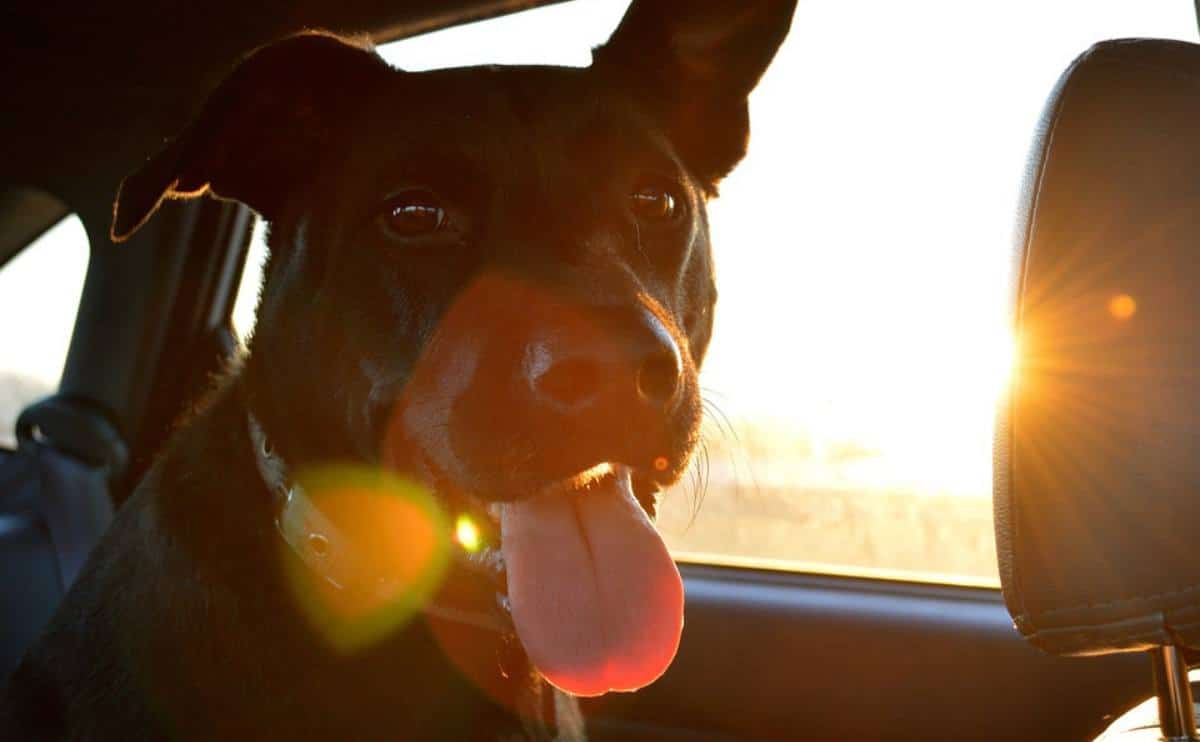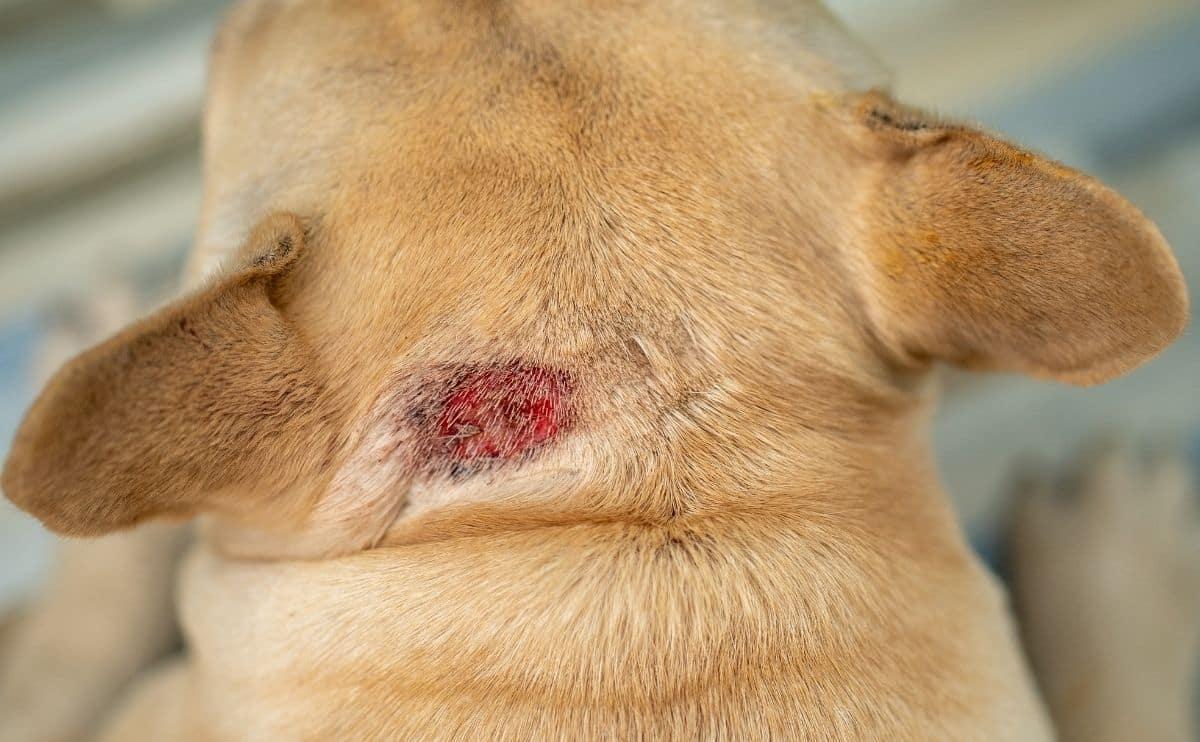Dog Skin Cancer: 4 Common Types, Causes, Signs, Treatment & More
When you purchase through links on our site, we may earn a commission. Here’s how it works.
Have you found a lump or suspicious-looking lesion on your dog’s skin? The fear that your pup has cancer probably enters your mind almost immediately. But the good news is that most skin abnormalities on your dog aren’t cancerous, and an estimated 60% to 80% of skin tumors on dogs are benign (non-cancerous).
Table of Contents
But the not-so-good-news? The most common type of cancer in dogs is skin cancer. So it’s crucial to take your dog to the vet whenever you find a lump or other skin anomaly on your dog to get it checked out. Because it’s the most common cancer in dogs, you should be informed about the most common types, including the signs, treatment, and more.
How Can Dogs Get Skin Cancer?
Just like with humans, a variety of factors can cause skin cancer in dogs. Many experts believe that genetics play a significant role, but overexposure to the sun, environmental chemicals, hormonal imbalances, and some types of viruses can also lead to dog skin cancer. Harmful chemicals you should be careful exposing your pup to include herbicides, insecticides, pesticides, second-hand tobacco smoke, and air pollution.
What Does Skin Cancer Look Like On A Dog?
Dogs get so many different kinds of lumps and bumps on their skin. It’s nearly impossible for us pup parents to know if they’re cancerous or not. And signs differ by the type of skin cancer, so we’ll highlight specific signs for each type of cancer below.
But in general, the best thing you can do for your pup is to examine your dog’s skin regularly and keep an eye out for any bumps, lumps, or suspicious-looking areas on his skin and see your vet for anything worrisome. Only your vet and laboratory tests can definitively determine whether a skin abnormality is benign or cancerous.
4 Common Types Of Dog Skin Cancer
Four of the most common types of skin cancer in dogs are mast cell tumors, malignant melanoma, squamous cell carcinoma, and fibrosarcoma. Other less common types include histiocytic sarcoma, basal cell carcinoma, hair follicle tumors, epitheliotropic lymphosarcoma, and others. We’re highlighting the most common here to help you know the signs to spot if you’re concerned that your pup has cancer.
1. Mast Cell Tumors
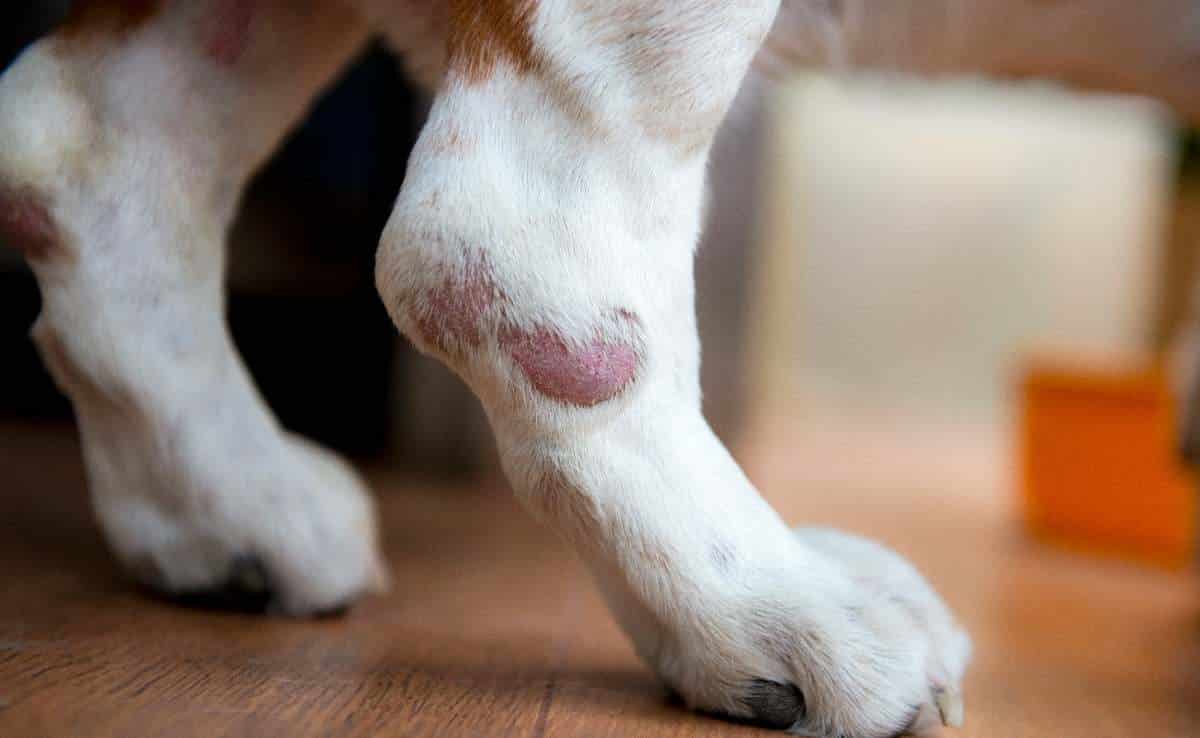
A mast cell tumor (MCT) occurs in the body’s mast cells, which are immune cells that release histamine. The most common type of skin cancer in dogs, MCTs can develop anywhere on a dog’s skin (and in internal organs) but are more frequently found on the limbs, chest, and lower abdomen. These tumors can be local or aggressively spread to other areas of the body.
MCTs typically appear in older dogs, between eight to ten years of age. Some known genetic mutations contribute to the development of MCTs. High-risk breeds include flat-faced breeds, such as Boston Terriers, Boxers, Bulldogs, and Pugs, as well as Golden Retrievers and Labrador Retrievers.
Signs And Symptoms
Some can resemble a wart, while others can be itchy, red, swollen, and ulcerated. They also vary in size and rate of growth. Some remain unchanged for months or grow very slowly, but more aggressive tumors can appear all of a sudden and grow quickly. The release of histamine also causes stomach ulcers in about 25% of dogs with a mast cell tumor. These symptoms include lack of appetite, vomiting or diarrhea, lethargy, and abdominal pain.
2. Malignant Melanoma
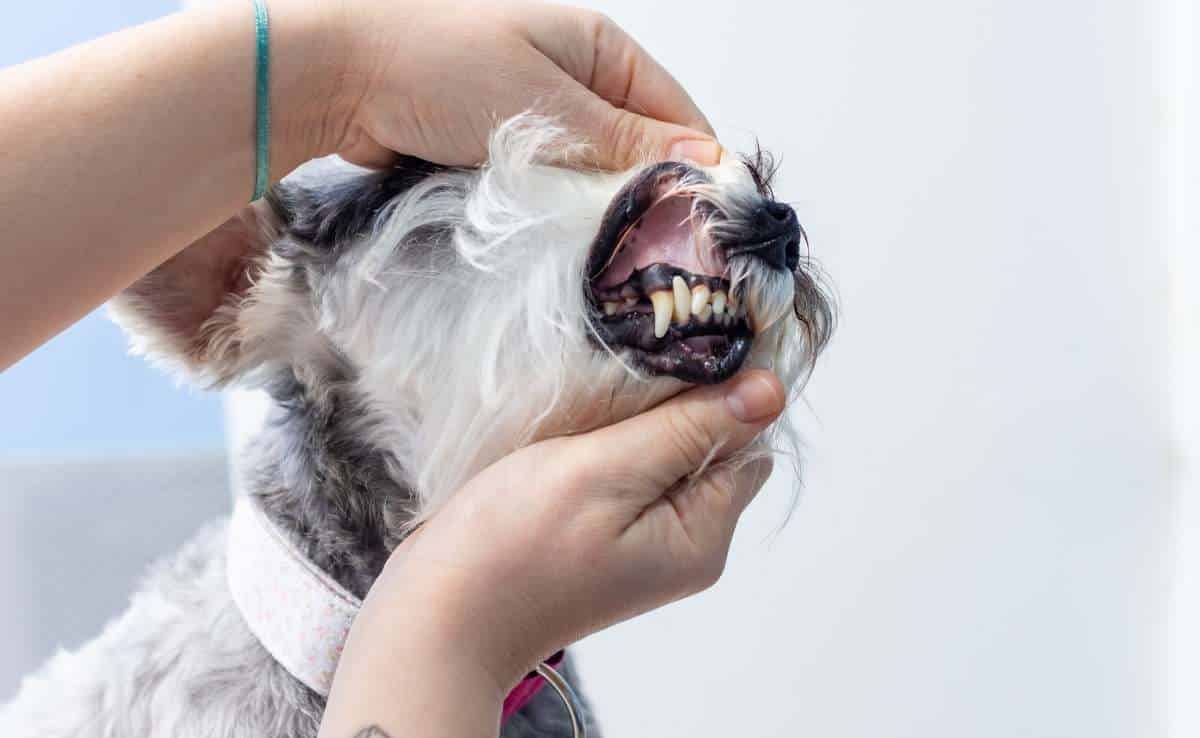
Melanoma develops from pigment-producing cells called melanocytes. Many melanomas found on a dog’s skin, particularly where there’s hair, are benign. Malignant melanoma in dogs is most often oral (on the lips or in the mouth) or subungual (in the nail bed), but some do appear on the skin. These tumors grow quickly and have a high rate of spreading to other areas of the body (metastasis), so early treatment is critical. Malignant melanoma is more common in older dogs, with Miniature and Standard Schnauzers and Scottish Terriers most at risk.
Signs And Symptoms
Oral malignant melanomas appear as raised lumps that are black or darkly pigmented in a majority of cases. However, some can be light gray or pink. and are frequently ulcerated.
Limping may be the first sign you notice if your dog has a malignant melanoma in the nail bed. They can cause toe swelling, bleeding, discharge, and often loose toenails or nail loss. Nail-bed melanomas can also destroy underlying bone in the feet.
3. Squamous Cell Carcinoma
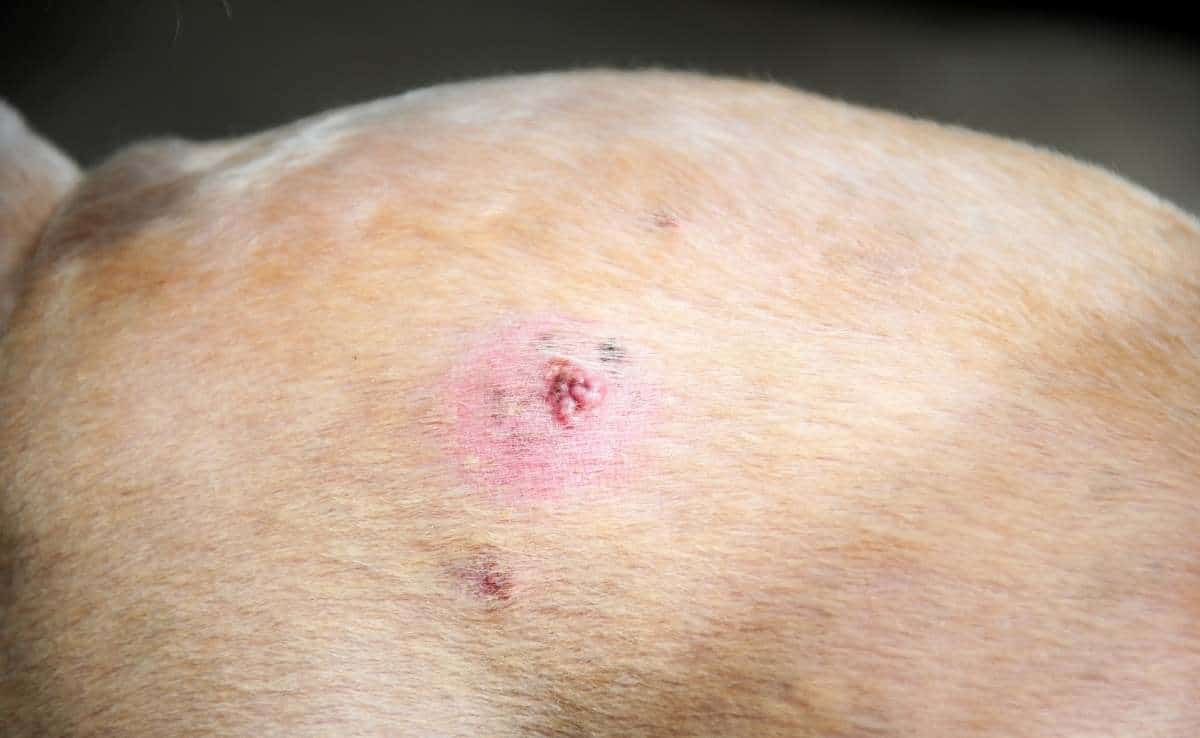
Squamous cell carcinomas (SCC) are localized malignant tumors that develop in skin cells. They can cause tissue damage around the tumor but rarely spread to other areas of the body. Scientists believe that these tumors are caused primarily by sun exposure, but another suspected culprit is exposure to the papillomavirus.
SCCs usually develop on the abdomen, lower legs, head, and rear, but they also occur in the mouth and nail bed. They’re mainly found in older dogs, between six and 10 years old. Breeds with the greatest risk include Basset Hounds, Bloodhounds, Collies, and Standard Poodles. SCCs are also more common in dogs with short coats and light-colored hair and skin (e.g., Beagles, Bull Terriers, Dalmatians, Beagles, etc.). Dark-coated dogs are more prone to nail-bed SCCs.
Signs And Symptoms
Some can become ulcerated and red, and they can also grow larger. In some cases, it’s quite difficult for owners to tell if the lump is dog skin cancer or a wart. Before these growths become malignant, dogs often develop discolored and thick skin (solar keratosis). So if you notice these early signs, it’s important to take your pup to your veterinarian. These patches can also be dry and itchy.
4. Fibrosarcoma
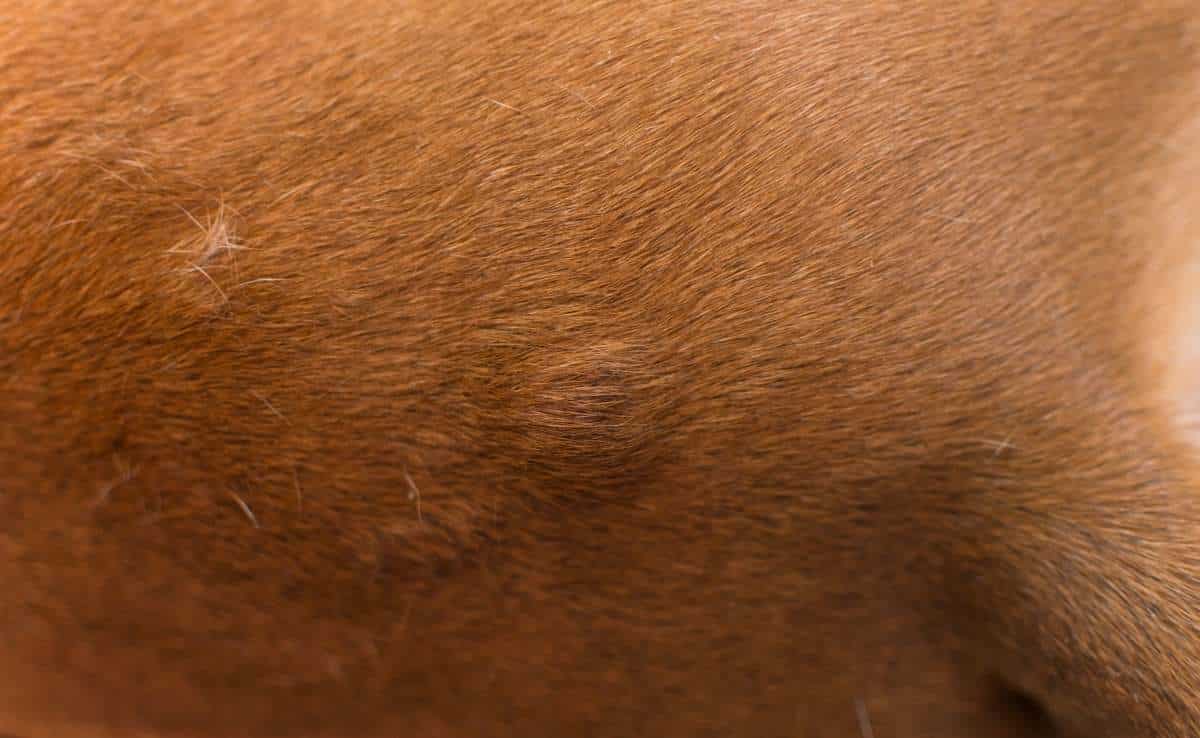
Fibrosarcomas usually grow slowly and rarely metastasize. However, they can invade the surrounding tissue and underlying muscles. Roughly 70% recur within a year following surgical removal. The average age of occurrence is 10 years old. Several large breeds are most at risk, including Brittany Spaniels, Doberman Pinschers, Golden Retrievers, Gordon Setters, and Irish Wolfhounds.
Signs And Symptoms
Most fibrosarcomas occur on the trunk of the body and legs, but they can vary in size and appearance. They usually appear as firm, fleshy lumps deep in the skin or lumps under the skin. Some ulcerate, bleed and become infected. They can also become swollen and painful.
How Is Skin Cancer In Dogs Diagnosed?
Your veterinarian will examine your dog’s bump or lesion and likely will perform a fine needle aspiration (extracting cell samples using a thin needle inserted into the abnormality) or a biopsy (removing a small tissue sample) for evaluation. In most cases, your vet will send the sample to a pathology laboratory to identify the type of skin cancer or benign growth.
How Is Dog Skin Cancer Treated?
Treatment can vary depending on the type, size, and location of the tumor and the overall health of your pup. Surgical removal of the tumor and surrounding tissue is the most effective option for most skin tumors, according to Merck Veterinary Manual. Chemotherapy or radiation treatment is often used along with surgery to provide the best possible prognosis.
Handling The Cost Of Cancer Care
Diagnostic tests, procedures, and cancer treatment can easily cause a huge financial and emotional toll on pet parents. If you fear your dog may develop cancer (or another serious illness) one day, investing in pet insurance can help you get your pup the treatment he needs without worrying about how you’re going to afford costly vet bills. As long as you have a policy in place before your dog becomes ill, pet insurance providers will cover a portion of costs for diagnostics, surgery, radiation, and other treatments.
Preventing Dog Skin Cancer
Although not all contributing factors are preventable, you can do a lot to lower your pup’s risk of developing skin cancer. Limiting exposure to direct sunlight and applying dog-safe sunscreen could help reduce your pup’s risk, particularly with hairless breeds and those with white or light fur, thin fur, and pink and white skin. You can also use caution with the chemicals you use inside or outside your home by choosing pet-safe lawn products, insecticides, cleaning products, and similar products.

